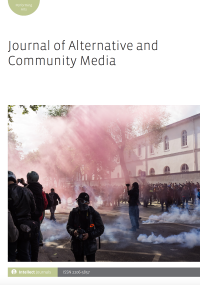
Full text loading...
 , Beatrice Ivey1
, Beatrice Ivey1
Community radio in Mali and Niger represents important hubs through which organized groups (such as listening clubs or associations) access information and participate in broadcasting through active and formalized channels. Drawing on radio listener focus groups conducted in Mali and Niger between 2018 and 2020, this article discusses the importance, to community radio, of ‘loud’ participation (formalized spaces) and ‘quiet’ participation (informal discussion spaces) amongst audiences. We argue that these ‘quiet’ forms of participation are important as they reinforce and support existing networks of solidarity in the community. Community radio stations rarely ‘hear’ listener participation via these informal spaces of discussion – which are more closely associated with women – but they are nonetheless crucial, yet overlooked, alternative forms of audience participation.

Article metrics loading...

Full text loading...
References


Data & Media loading...

Publication Date:
https://doi.org/10.1386/joacm_00099_1 Published content will be available immediately after check-out or when it is released in case of a pre-order. Please make sure to be logged in to see all available purchase options.